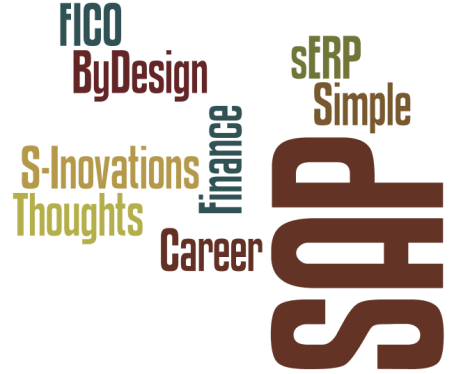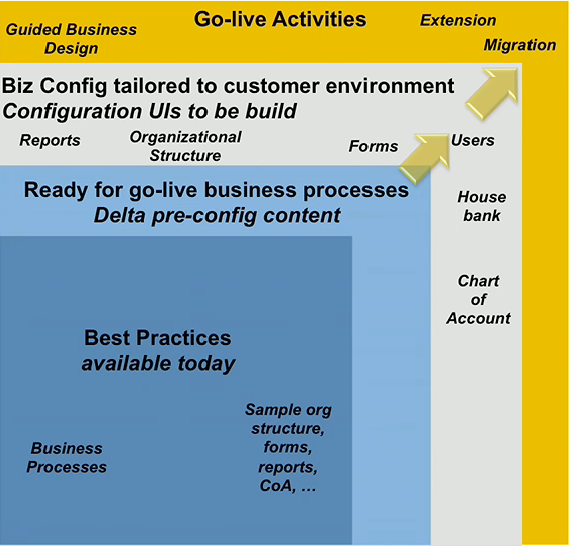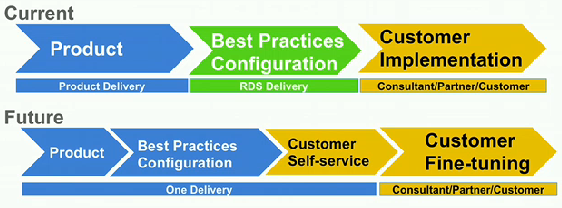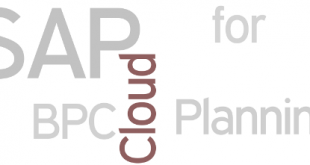
There is no doubt SAP HANA is a future, not just a hype as it was before. One and half years ago, most of the SAP Business Suite Consultants were just advising that it is not necessary and not feasible to migrate to it in the near future. This was changed dramatically in the last six months. Now many big companies are in process of consideration moving their core business apps to HANA and many of the rest will follow. Many are either in prototyping or they already implemented less critical business processes on Business Suite powered by SAP HANA.
Yesterday I have found a time to enjoy some resources regarding this topic. I checked few recorded sessions from SAP Teched && d-code, but one made me the biggest impression. It is a session which is embedded in the end of this article presenting the SAP Simple Finance steps in implementation, testing and go-life. One interesting fact SAP Fiori UI is not just a part of the end-user experience, but of configuration of Financial modules as well. Another interesting topic is that IMG menu will not be available for SAP Simple Finance used on public managed by SAP cloud. If you are consultant, you could probably say – OMG!
OK, lets move back and see what exactly is Simple Finance. This is the newest SAP development based on SAP Business Suite related to SAP FICO modules and powered by SAP HANA. The SAP is differentiating this development for cloud and on-premise world. These redesigned FICO modules are packed under the name SAP Financials/Accounting Add-on for Business Suite powered by HANA for on-premise solutions and SAP Simple Finance or sFin for the SAP Cloud offerings.
Speaking about choices of implementation, I found an interesting post on scn. Following quote is the essence for me.
Public cloud – Resources are shared between organisations for maximum cost-efficiency. The cloud service provider owns and operates the infrastructure and offers access via Internet
Private cloud is cloud infrastructure operated solely for a single organization, whether managed internally or by a third-party and hosted internally or externally
Hybrid cloud is a composition of more than one entity (private, public or on premise) that remain unique entities but are bound together. Hybrid cloud combines the benefits of multiple deployment models
So, when you see the video below, bear in mind that the lecturer talks about SAP Simple Financials modules offered on the SAP’s public cloud. There SAP will provide constant updates and innovations for fraction of the cost compared to on-premise solutions. For sure, if you compare only the license costs and the monthly fees, it will costs more, but if you start to count the labor costs of the SAP basis consultants behind every on-premise installation you will start to realize the cost-saving effects.
SAP will continue to release new “Simple” products also known as S-Innovations or sERP. They will be firstly released for SAP cloud and then offered for on-premise applications as well. SAP are also inspired by Apple to bring simplicity and user experience comparable iOS devices. Here we talk about simple and quick implementation, simple testing and beautiful UI. There is no easily way to convert complex solution as Business Suite as simple product without paying some price.
The price which you will pay here is based on the fact that you will loose flexibility which IMG menu was providing you. The sERP solution is comparable to SAP Business All in One where you are capable to deploy SAP ERP in much more rapid way based on pre-configured best practices scenarios. The general intention from SAP is to make “Simple” ERP public cloud solutions even more simpler to implement and consume. It is expected that business super users in cooperation with company IT support could adapt and deploy the sERP solution. Then, if they are specific needs they will look for an experienced consultant.
Following are two screenshots from the video below, which would be a bit more explanatory. The general idea is that the blue and gray area could be done by the company itself and the orange are with the help of consultants.

On the next graph you will see the new role of the consultants compared to the current implementation of SAP Business All in One.

So, why is SAP removing IMG menu at first place? I am thinking, that the main reason probably is simplification in terms of easier maintenance, upgrades and integration and with the rest of the cloud portfolio. The price of lost flexibility will for sure be compensated in terms of TCO and new innovations you will get every three months.
Based on the information above, here are my thoughts:
1. It looks like SAP Business ByDesign and SAP sERP will compete for the same market segment. While there is a very recent roadmap for ByDesing from this month, sERP will potentially replace ByDesign at some point. Probably it will be not so hard for SAP to make this transition very smooth and without or minimum downtime.
2. Probably SAP will start to offer sERP solutions on existing customer base as perfect subsidiary solution which could be easily integrated to the headquarter on-premise solution. Unlike ByDesing, Business Suite has much more country localisations which will increase the adoption rate. The opportunity to move the solution from public to private cloud or to on-premise will also be key decision-making factor.
3. I am really interested how successfully “Simple” will be the rest of applications such as SD, MM, WMS, etc. They will probably be based on the All-in One industry templates, but what SAP will do to offset the lost flexibility of IMG menu is something I do not know.
4. The companies which go for public cloud offer will greatly benefit from all new innovations which SAP will do in the next few years. There is no doubt that the future is in the tight integration between customers, suppliers, shareholders and community as whole.The cloud will provide this integration for free or for fraction of the cost that you will pay if you do it by your own on on-premise installation.
5. FICO Consultants should think about what SAP is doing in the last one and a half years. The intention of SAP is to make their products easier to use, easier to maintain and easier to implement as well. For these new Simple ERP applications, the demand for advanced skills will be less. The entry barriers for newcomers will be less as well which is an opportunity for many.
Here is the recorded session.
*If you have troubles, use the following link.
 ETCircle.com SAP FI and CO consultant information
ETCircle.com SAP FI and CO consultant information



